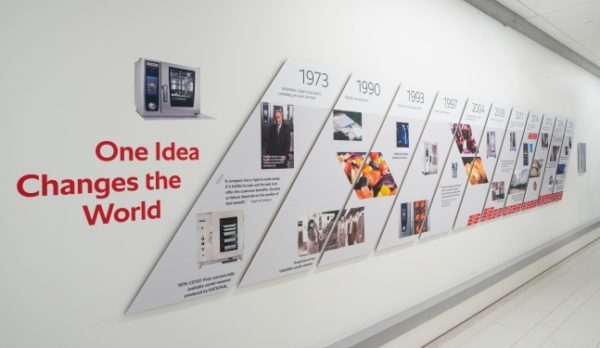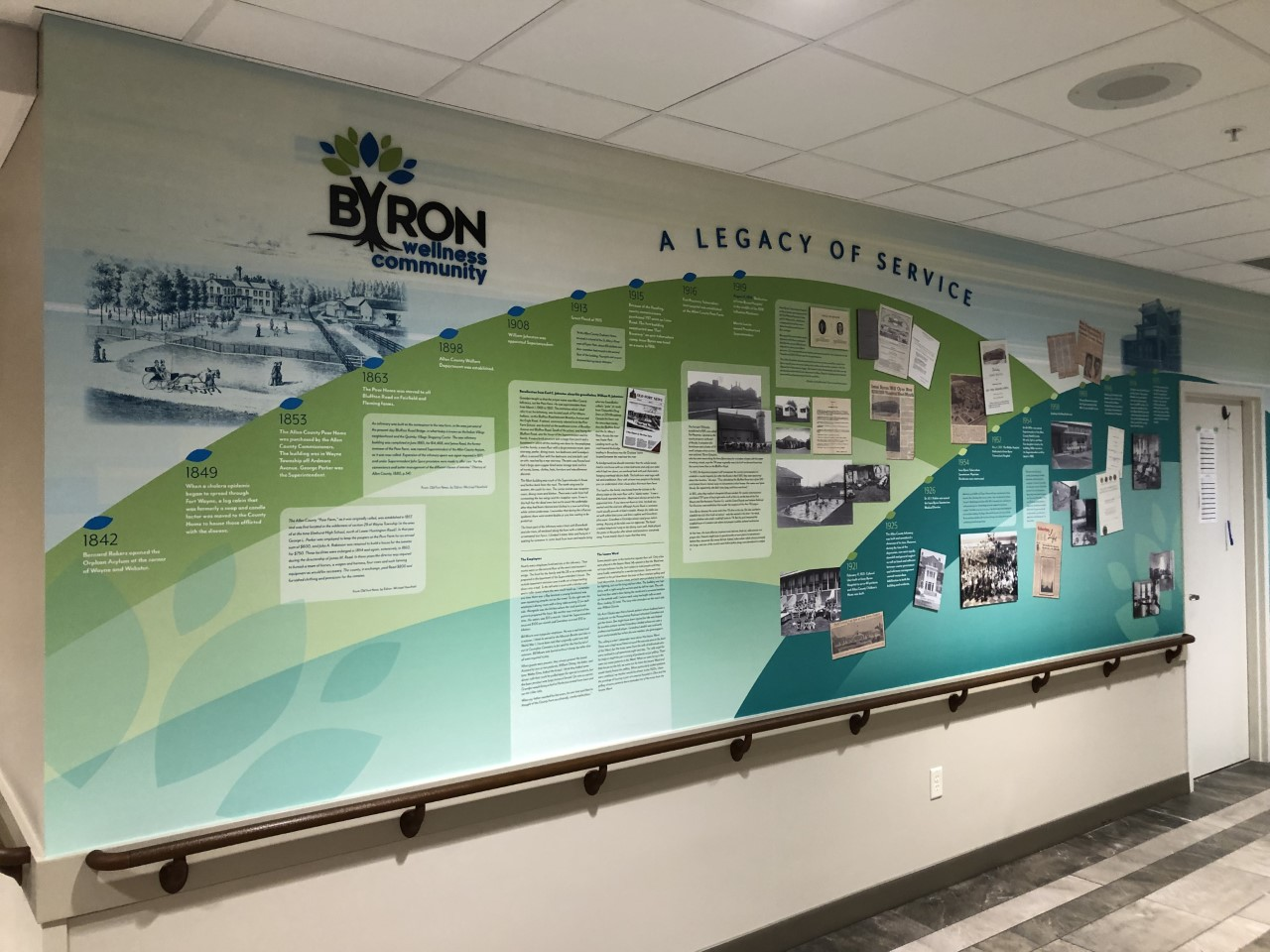 In the competitive world of business, corporate identity is more than just a logo or a catchy slogan—it’s the story of how a company has evolved, innovated, and achieved success. One of the most compelling ways for companies to communicate this narrative is through corporate timeline displays. These visual storytelling tools provide an engaging, interactive, and memorable way to showcase a company’s history, growth, and milestones. Whether in the form of a physical wall, digital screen, or interactive exhibit, corporate timeline displays have become essential elements in corporate offices, headquarters, lobbies, and even trade show booths.
In the competitive world of business, corporate identity is more than just a logo or a catchy slogan—it’s the story of how a company has evolved, innovated, and achieved success. One of the most compelling ways for companies to communicate this narrative is through corporate timeline displays. These visual storytelling tools provide an engaging, interactive, and memorable way to showcase a company’s history, growth, and milestones. Whether in the form of a physical wall, digital screen, or interactive exhibit, corporate timeline displays have become essential elements in corporate offices, headquarters, lobbies, and even trade show booths.
In this blog post, we’ll explore the importance of corporate timeline displays, their benefits, and how they can be creatively implemented to highlight a company’s journey.
What is a Corporate Timeline Display?
A corporate timeline display is a visual representation of a company’s history and key milestones. It’s a chronological narrative, often presented on a wall, digital display, or interactive board, that highlights the most significant events in a company’s evolution—such as its founding, product launches, major achievements, leadership changes, and pivotal moments that defined its path.
At its core, a corporate timeline is designed to give visitors, clients, and employees a clear sense of the company’s heritage, accomplishments, and future ambitions. These displays can be sleek and minimalistic or rich in multimedia elements like images, videos, and interactive features.
 Why Are Corporate Timeline Displays Important?
Why Are Corporate Timeline Displays Important?
1. Showcase Company Legacy and Growth
One of the primary reasons for implementing a corporate timeline display is to showcase a company’s growth. From a small startup to a globally recognized brand, the timeline serves as a visual testament to the journey. By documenting major milestones, the company not only celebrates its past but also creates a sense of continuity, reinforcing its values and long-term vision.
For example, a timeline might begin with the company’s founding year, followed by the launch of key products or services, significant partnerships, or expansions into new markets. Over time, this timeline evolves into a dynamic representation of the company’s trajectory.
2. Create a Strong Corporate Culture
Corporate timeline displays can also have a profound impact on internal culture. Employees and stakeholders can connect with the company’s journey on a personal level, understanding how their work fits into a broader narrative. These timelines serve as a reminder of past successes, challenges overcome, and the collective effort that led to the company’s achievements.
In large corporations, this can help break down silos, remind employees of the company’s values, and inspire them to contribute to future milestones. Additionally, showcasing leadership transitions and employee achievements along the timeline can foster a sense of belonging and pride.
3. Enhance Brand Identity
Branding is not just about logos and marketing campaigns—it’s about how a company presents itself to the world. A corporate timeline display is an excellent way to reinforce brand identity. It tells the story of the company’s evolution in a visually appealing way, reinforcing the core values, vision, and mission that the company represents.
For example, a technology company might highlight how its products have evolved, from its first groundbreaking innovation to its latest advancements. A non-profit organization could showcase its milestones in terms of social impact and the difference it’s made in communities over the years.
4. Engage Visitors and Clients
For visitors, clients, or potential investors, a corporate timeline provides an immediate understanding of the company’s journey. It offers them insight into the company’s credibility, reputation, and stability, all of which are crucial when building trust and relationships.
A well-designed timeline can captivate attention and initiate conversations about the company’s history. It helps create an impression that the company is grounded in experience, while also demonstrating its ongoing efforts for innovation and progress.
Types of Corporate Timeline Displays
Corporate timeline displays come in a variety of formats, depending on the company’s needs, budget, and the environment in which the timeline will be placed. Here are a few common types:
1. Physical Timeline Displays
Physical corporate timeline displays are often installed on walls or within exhibition spaces. These can be created using various materials, such as:
Wood or Metal: For a timeless and elegant feel, companies often use metal or wooden panels. These materials allow for engraving or printing key milestones and dates. Wood, for example, can give a company’s timeline a warm, rustic aesthetic.
Printed Posters or Banners: A more cost-effective option, printed posters or vinyl banners can visually map the company’s milestones in a linear fashion. These types of displays are ideal for temporary exhibitions or for smaller companies that may not have a digital display budget.
Interactive Wall Displays: These are sophisticated physical installations that may incorporate touchscreens or augmented reality (AR). Visitors can interact with these displays to explore the timeline in greater detail, such as watching videos, reading stories, or engaging with key milestones.
2. Digital Timeline Displays
With advancements in technology, digital corporate timeline displays have become increasingly popular. Digital displays are versatile and allow for much more interactivity and dynamic content. These displays can be:
Touchscreens: These are ideal for corporate offices, trade shows, or visitor centers. Touchscreen displays allow users to click through milestones, watch videos, or zoom in on specific events. They offer flexibility and interactivity in ways that printed timelines cannot.
Projection Mapping: This cutting-edge technology enables companies to project their timeline onto a surface, such as a wall or even the floor. Projection mapping can animate the timeline, allowing for a more engaging, cinematic experience. It’s especially effective at trade shows, in museum exhibits, or as part of an innovative office design.
Online Timelines: For global companies or those looking to reach a wider audience, online timelines or interactive webpages can serve the same purpose as a physical display. These can be integrated into a company’s website or intranet and shared with clients, stakeholders, or the public. Some online timelines even allow for live updates as the company achieves new milestones.
3. Hybrid Timeline Displays
In some cases, companies choose to combine physical and digital elements to create a hybrid timeline display. For example, a company might have a physical wall with a few key milestones highlighted, while incorporating QR codes or augmented reality markers that link to digital content. This allows visitors to experience both the tactile feel of a physical display with the interactive depth of digital media.
Best Practices for Creating an Effective Corporate Timeline
To make the most out of a corporate timeline display, here are some best practices:
Keep It Simple and Visual: A cluttered timeline can be overwhelming. Stick to the most important milestones and use visuals, such as images, icons, or videos, to break up the text and keep the viewer engaged.
Focus on Key Achievements: Be selective about what to include. Highlight the moments that are truly significant—those that define the company’s identity, growth, and impact.
Maintain Consistency with Branding: Make sure the design of the timeline aligns with the company’s overall branding. Use the company’s colors, fonts, and logo to maintain a cohesive aesthetic.
Make It Interactive: If you’re using digital or hybrid formats, incorporate interactive elements like videos, clickable icons, or timelines that expand upon selection. The more engaging the display, the more memorable it will be.
Keep It Updated: A timeline is a living, breathing document of a company’s journey. Ensure that it is updated regularly to reflect new milestones, product launches, and key events.
Conclusion: Telling a Powerful Story
A corporate timeline display is more than just a decorative piece—it’s a storytelling tool that allows companies to communicate their evolution and impact visually. Whether used in a corporate office, a public exhibition, or a client presentation, a timeline provides both internal and external audiences with a compelling narrative about where the company has been, where it is now, and where it’s headed.
As companies continue to grow and innovate, corporate timeline displays will remain a key part of how they shape and share their identity. By embracing both traditional and cutting-edge design elements, businesses can create dynamic, engaging timelines that leave lasting impressions.
corporate history wall
history wall design
company timeline wall
corporate history walls
history walls design
company timeline walls
